
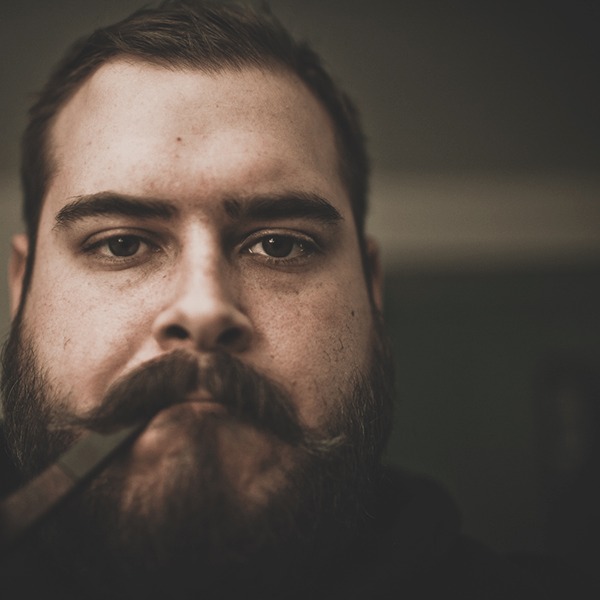
The Well-Rounded Gent is the Chubstr feature that focuses on the finer things in life. From fashion to grooming to etiquette, we cover it here. This week, we take a look at smoking tobacco in a fancy pipe with someone who knows all about it – Scott Spolverino from In With Bacchus.
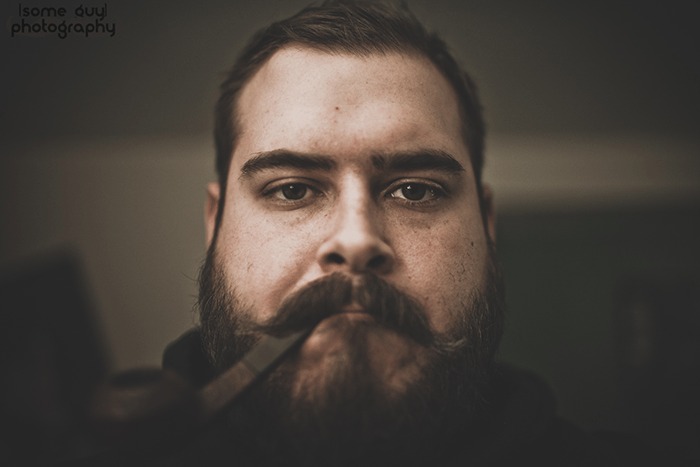
Photo: Dan A. Crosley (danimal_inc) via Flickr
The briar pipe is a luxurious instrument of contemplation. From scientists to musicians, writers and comedians, the pipe gives moment for pause and reflection. The ritual behind preparing it and the act of smoking it all lend towards slowing down, thinking, and even meditating. While it fell by the wayside, recently there has been a resurgence of pipe smokers who value not just the aesthetics of a quality craftsmanship, but the opportunities for reflection it provides. Maybe you’re one of those people who wish to take up the mantle of the pipe but you don’t know where to start. If you want to peruse this hobby but don’t know where to start, maybe I can help. I am In With Bacchus (or Scott Spolverino) and I smoke a pipe. So if you’re interested and want to learn more…let’s begin.
There are many variations of the pipe at this point. They run from utilitarian to smokable pieces of art, spanning dozens of types of materials to fit any budget. If you were so inclined to jump in feet first (and with a heavy wallet), you could go straight for an artisan pipe like those from Denmark, Japan, or the United States. However, I recommend starting simply.

Corn cob pipe – photo by Tanya (nikongirl1969) via Flickr
The humble corn cob pipe may make you look like you walked out of a feed store, but they are an absolute joy to smoke. With pipes, especially wood, there needs to be a period in which you break-in the pipe by repeatedly smoking it to char the bowl material so it doesn’t lend its flavor to the tobacco. For briars, this process can take weeks of daily smoking just to break-in the pipe. However, with the corn-cob, this takes only a few smokes, if any at all. The long drying time of the corn cob and the usage of plaster of Paris on the cob itself gives it a neutral flavor that smokes well out of the package. They are also remarkably resilient in terms of how often you can smoke it.
Once you’ve smoked your cob to the point that you’re comfortable and familiar with the process, I’d recommend getting an actual briar pipe. You can go two routes: new and estate. Estate pipes are pipes previously owned (and smoked) that are cleaned, sanitized, and put up for sale. These offer some great bang for your buck when starting out and you won’t feel too bad about perfecting your technique on a new type of pipe material. You can also go for a new pipe like Dr. Grabow, which is treated to replicated the break-in process to provide a fantastic smoke. I have a Dr. Grabow Lark which performs admirably and I’d recommend them as a jump to briar wholehearted. After that (or instead of that), you can go hog-wild.

Photo by Woody Hibbard (pamwood707) via Flickr
Briar pipes can, in general, only be smoked once a day to prevent the pipe from overheating or becoming filled with moisture which will cause the bowl to crack. Other pipes that are good beginner pipes are clay and meerschaum. Clay pipes are extremely neutral and can withstand repeated smoking through the day. Meerschaum, too, has these properties and has the added bonus of absorbing tobacco oils to turn the driven-snow white bowl a deep amber color as you smoke it. However, both have their downsides. Maintenance of the meerschaum is finicky at best and clay pipes are extremely fragile. Also…the price. A good meerschaum can set you back well over the price of a briar and clay pipe prices are nothing to shake a stick at either. So, I go for the cheap and brutally efficient way first.
Search the internet for “pipe tobacco” and you’ll come across enough brands, types, and cuts that your head will spin clean off. Things like Latakia, flake, ribbon cut, and Burley will dance across the screen followed by numerous brand names. This is your biggest (and best) trial. Choosing a pipe is easy, choosing a tobacco is hard. But it is the most delicious of tests.

Photo: el Neato (neatomang) via Flickr
To start, pipe tobacco can be broken down into three VERY rough categories: Aromatic, English, and Virgina. Aromatic pipe tobaccos are generally Cavendish based (Virgina and burley tobacco put under pressure to enhance the conversion of starch to sugar) with a variety of casings on it. Casings are things added to tobacco to allow it to smoke well. If you’ve ever had the chance to smoke raw tobacco, you’ll find that it’s a wholly unsavory exercise. Casings (or toppings) of fruit, chocolate, spirits, or any other sundry of flavorings smooth the tobacco out and give it a wonderful flavor and room note (the aroma others smell when you smoke it).
English blends are the peated scotches of the pipe world. Made of “Oriental” tobaccos from Eastern Europe and the Middle East, they are smoky and powerful beasts on even the lightest end of the spectrum. Virginia blends are composed primarily of Virginia tobaccos with a variety of modifiers (dark, pressed, and fermented perique or classic American burley). They are light, citrusy, and can have amazing depth and breadth of flavors and aromas.
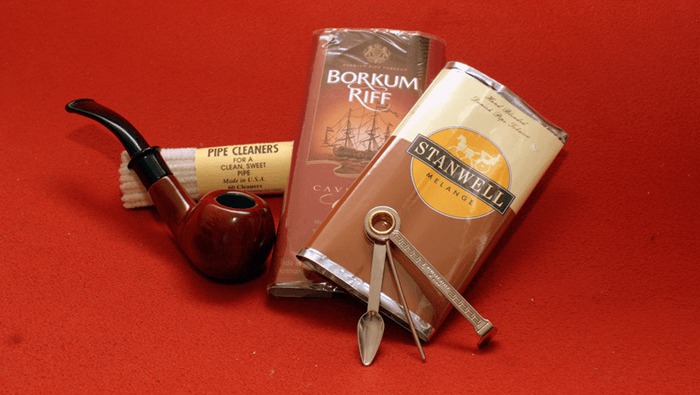
Photo: Anaxolotl (lifeinverted) via Flickr
You are going to want to start with a drug-store blend. A drug-store blend is, generally, a Burley blended American type of tobacco that you can find at a drug store. There is an argument that can be made to buy some more artisan pipe tobacco but when you’re just learning, a drug-store blend is something that will both limit the problems you may have as well as blatantly illustrate the problems that can arise. They are easy to load into a pipe, RARELY dry out, and will forcefully teach you the art of “don’t rush” when smoking (otherwise your tongue will feel like a smouldering coal). Fear not, though! Drug-store brands are pretty good these days. Prince Albert is as solid as it was in the early 1900s. Carter Hall is always a good choice. But I recommend playing around to see what strikes your fancy. There are some drug store Englishes out there (Altadis’ “Fox and Hound” is near and dear to my heart) and some Virginias (like Troost). At this point, you’re really working on technique as opposed to flavor so pick something agreeable and get to work.
After you get things down, it’s time to start buying. There are a plethora of sites online that offer fantastic deals on pipe tobacco of all kinds. I personally recommend “Smoking Pipes” and “Pipes and Cigars” for my tobacco needs. Don’t be afraid to order bulk tobacco as well. Normally, tobacco will come in tins or pouches but, for people that already have a preferred method of storage and just want to refill on their favorite smoke, companies will offer the ability to buy bulk amounts with no fancy packaging…at a very economical price. You’ll want to start with cuts of tobacco like ribbon cut, shag, or “ready-rubbed”. There are other types of tobacco such as flake, plug, and twist that can be smoked but those require solid fundamentals of smoking before attempting. I’ve been smoking for 9 years now and I still can’t load a pipe with a flake correctly! Avoid “pipe cut” tobaccos that have been springing up lately. Those are mainly meant for make-your-own cigarettes with tube and machine. You can smoke them, I guess, but I know enough to state that you will probably regret it. And don’t balk at trying stuff. Pipe tobacco is cheap, relatively speaking. Order it and, if you don’t like it, try trading it on one of the many pipe websites around. I’m sure someone will be willing to take it off your hands in exchange for something you’d like to try as well.
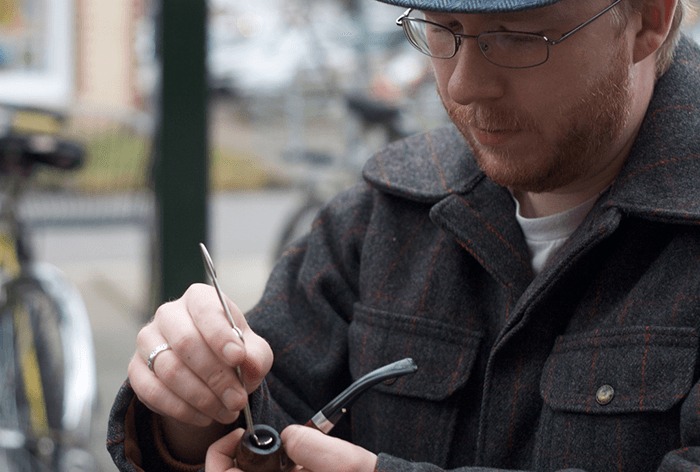
Photo by David Wright (Davidrobertwright) via Flickr
Once you have your pipe and a tobacco, there’s only a few more things you’ll need. First is a pipe tool. They’re made of stainless steel and have a tamper, a poker, and a scraper on it. A set of pipe cleaners and you should be good to go.
It is important to note here about pipes and tobaccos. To start, you want to only smoke a pipe (briar) once a day to prevent it from cracking or becoming heat-damaged. You also, ideally, want to dedicate one type of pipe tobacco to a pipe. I have a pipe for Virginias, a pipe for Englishes, and a pipe for Va/Pers (Virginia and Perique blends). I use a cob for Aromatics as well. If you’re using a cob to start, or a meerschaum / clay, you don’t have to worry too much. Their neutrality means you can kinda just go with it. But for briar, rest and exclusivity is important.
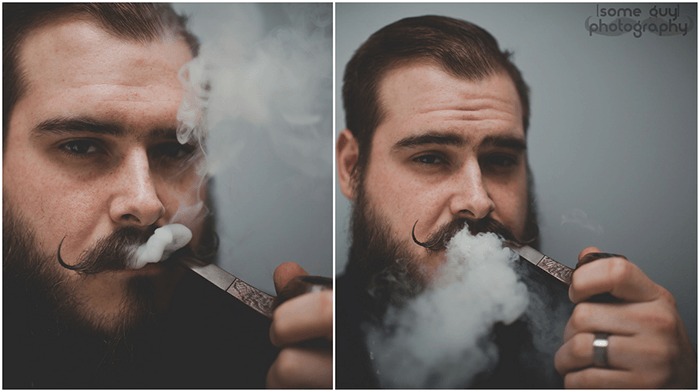
Photo: Dan A. Crosley (danimal_inc) via Flickr
Okay, to start. Take your pipe, a lighter (you can get special pipe lighters with a canted flame but I like Bics because I’m cheap), your pipe tool, and your tobacco and have a seat. Open the pouch or tin and draw some of the tobacco out. Feel it in your hands. It should not be crispy and crunch (too dry) but it should smoosh into a clump and not spring back when squeezed. If it’s dry, put it in a ziploc with a distilled water-soaked paper towel and let it absorb some moisture. If it’s wet, just leave it out for a bit. Once that’s done, you’re going to begin packing it. Take a finger-full, grasping it with your thumb, pointer, middle, and ring finger and gently start pouring it into the pipe. Don’t stuff it in there, just kinda shake it in until it’s a little over the top of the pipe. Then, you are going to push it down, gently, with your thumb until it’s half way full. Refill those fingers, fill it until slightly overfull, and then tamp down until three-quarters full. Fill your fingers, fill until slightly overfull, and then press it down until it’s flush with the top of the bowl. Now, take a draw. It should be relatively easy to draw through with a little bit more resistance than a straw. If it’s too tight, you can use the poker on your pipe to make some air holes or you can dump it out and try again.
Once it’s packed, it’s time to light. You’ll want to do a “false light” first to dry the tobacco and set a good groundwork for it to burn all the way down. Take your lighter and run it over the top of the tobacco until it’s it turns red and some tobacco turns to ash. At this point, take your tamper and GENTLY tamp it down. When tamping, you just want to compress the ash down onto the tobacco. You don’t want to be compacting the tobacco itself. Once that’s done, relight it and get a good burn going on, tamp again…and puff. You did it. Congratulations. You packed, lit, and are now smoking your pipe. If it goes out, don’t worry. Just apply more fire. You’ll get the hang of packing it and smoking it until you won’t need to relight it at all (even I’m not at that point). Every once and awhile tamp the ash down to ensure proper connection of the burning tobacco with the tobacco under it.
Oh, also, smoke slow. Smoking too fast will cause that dreaded tongue bite, in which your tongue first starts to tingle and then it becomes like a sunburn slapped by a friend on your tongue. So go slow and savor. Relax and enjoy it. And welcome to the club.
Follow Scott Spolverino on Twitter at @inwithbacchus or at his website, InWithBacchus.com.